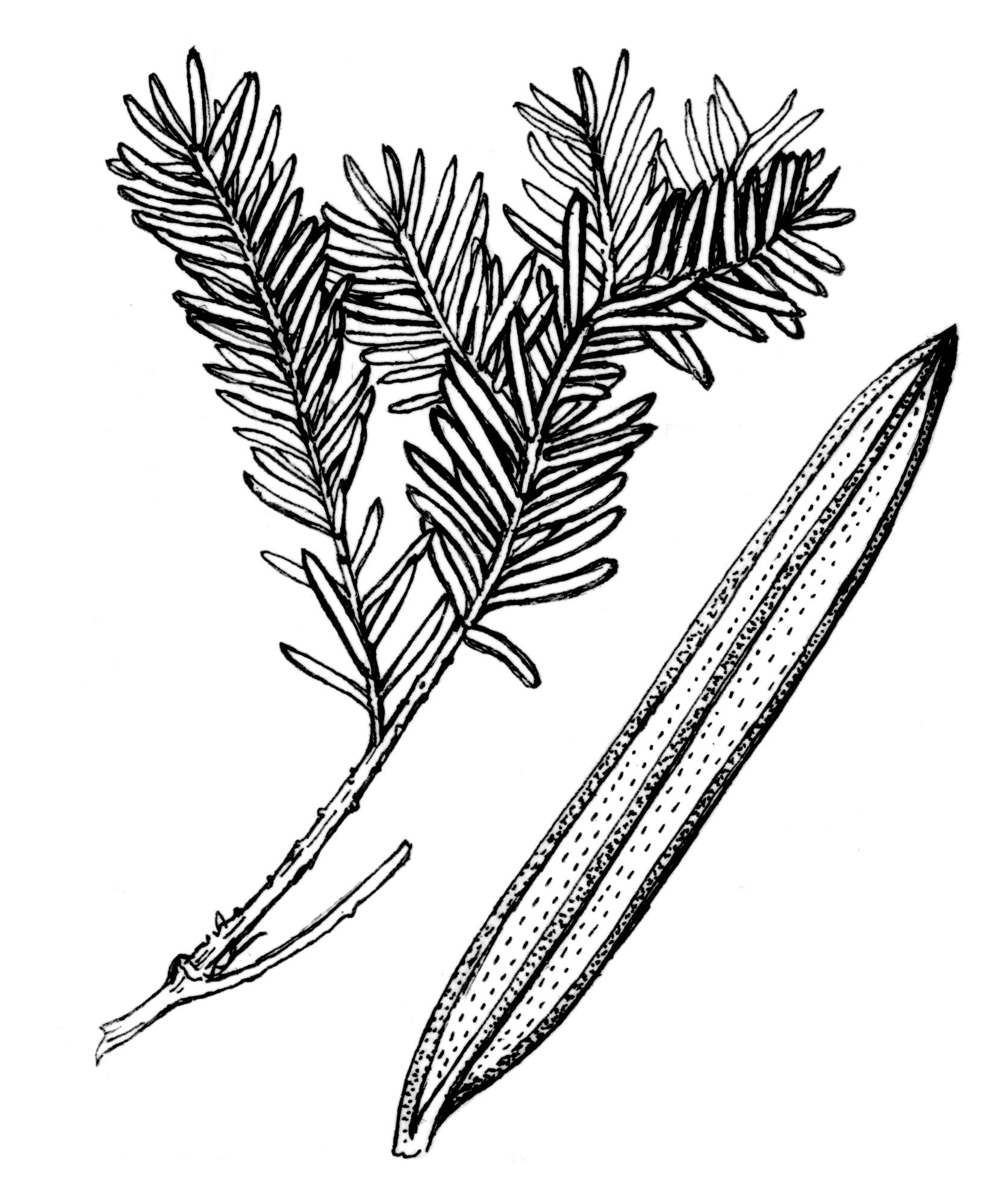
A broad-conic tree to 20 m tall, generally with several trunks. Buds 1-2mm long, green and pointed. Leaves 1.5-3 cm long, blue-green above and with two pale bands below, linear, acute, soft. Fruit cream-coloured with a thin, fleshy, edible layer.
Chile an Argentina (Andes) but now rare in the wild.
VIC: Geelong (Bot. Gds, 1 large tree); Daylesford (Botanic Garden); Mt. Macedon (old Taylor &Sangster Nursery site). TAS: Hobart (Royal Tasmanian Bot. Gds).
NSW: Jervis Bay (Bot. Gds); Mt Tomah (Bot. Gds in Brunet meadow and in front of Visitor Centre); Sydney (Royal Bot. Gds). ACT: Australian National Bot. Gds.
P. ferruginea (D. Don) de Laub., Miro, is occasionally offered in the nursery trade; it is a New Zealand tree with adult leaves like those of a short-leaved Taxus. A mature specimen over sixty years old may be seen below the Craft Cottage entrance path at the Royal Bot. Gds, Melbourne. The leaves in 2 ranks in feathered sprays superficially similar to those of the yew but the leaves a paler green, white banded below and the buds with pointed scales that meet edge to edge, not overlapping.
P. ladei (Bailey) de Laub. from near Port Douglas in N Queensland, is sometimes cultivated in New South Wales and Queensland. Specimens are occasionally offered in the Victorian nursery trade but the growth is generally poor; it grows naturally as an emergent in broadleaf and dense podocarp forest.
Source: (1995). Podocarpaceae. In: . Horticultural Flora of South-eastern Australia. Volume 1, Ferns, conifers & their allies. The identification of garden and cultivated plants. University of New South Wales Press.
